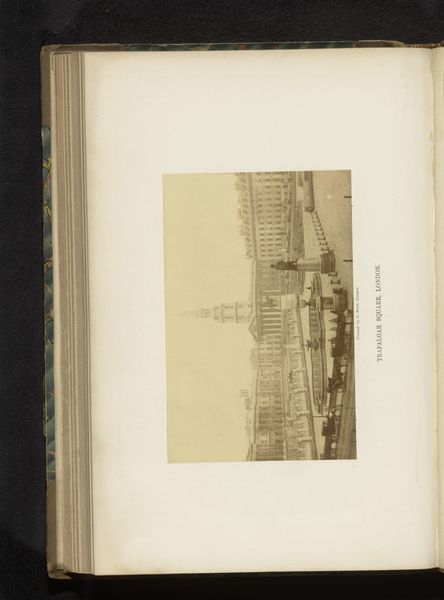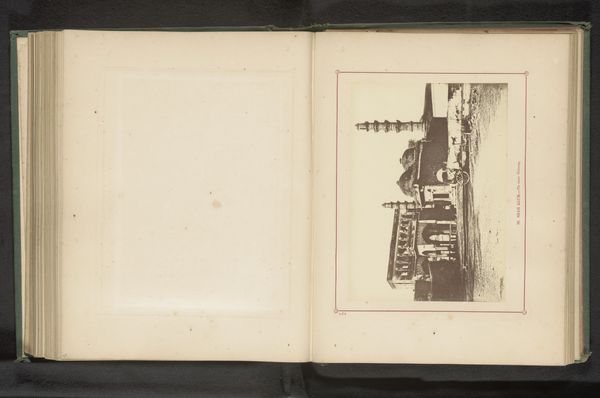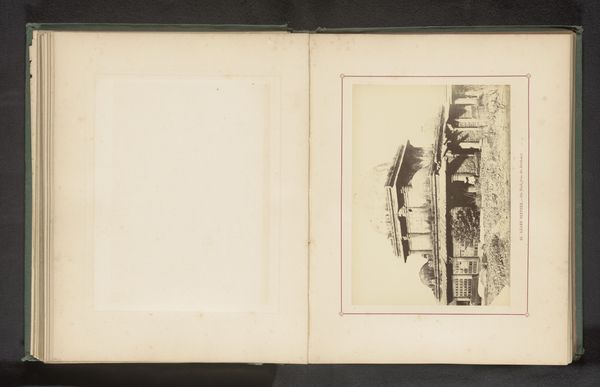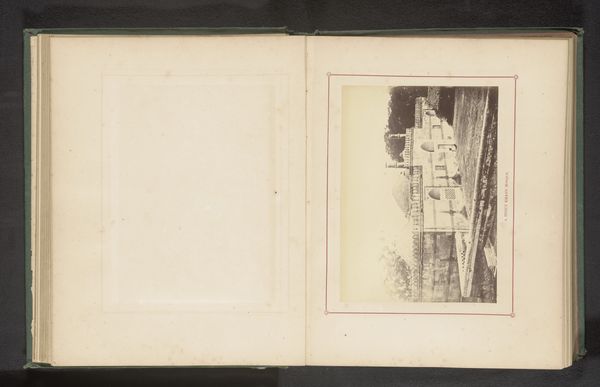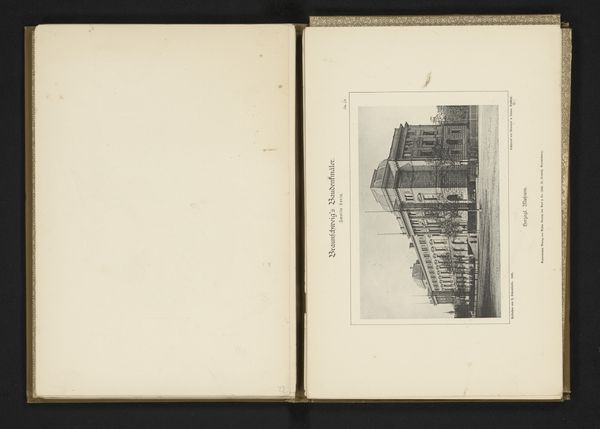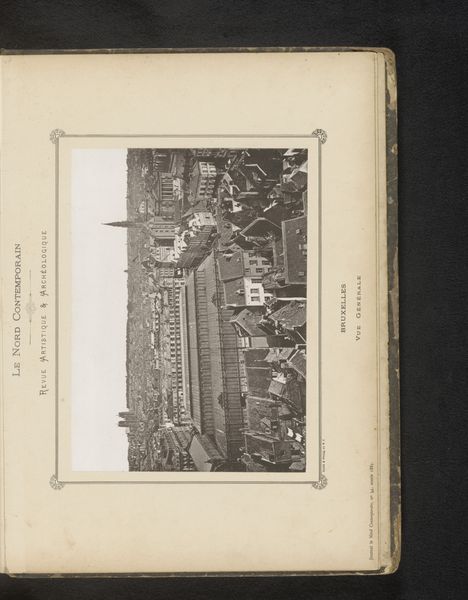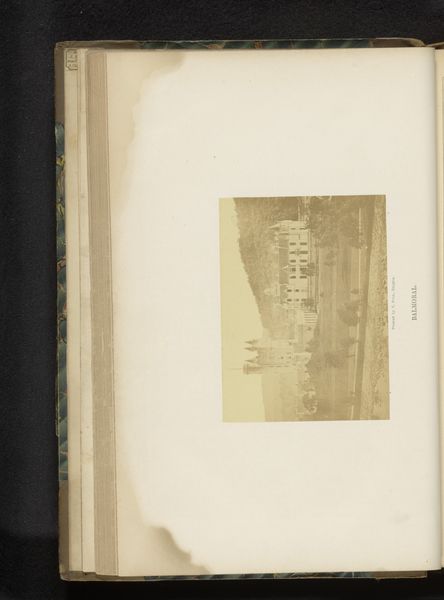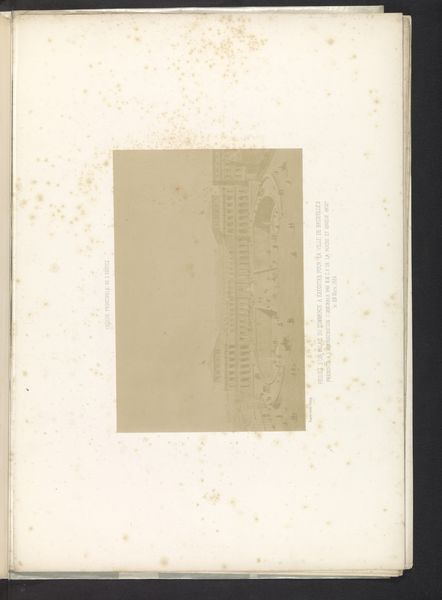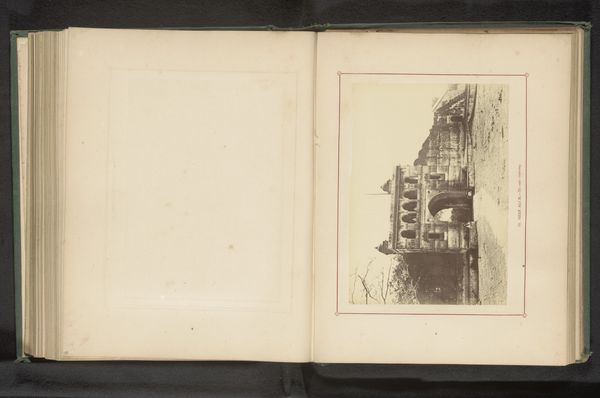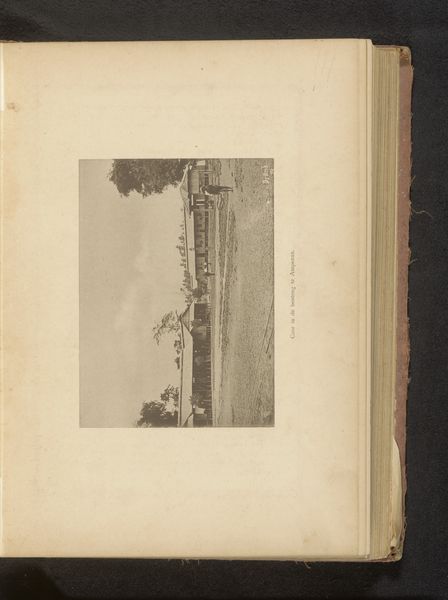
Gezicht op het gebouw van de International Exhibition van 1862 in Londen, Engeland Possibly 1862 - 1865
0:00
0:00
francisfrith
Rijksmuseum
print, photography, albumen-print
# print
#
landscape
#
photography
#
coloured pencil
#
orientalism
#
cityscape
#
watercolor
#
albumen-print
Dimensions: height 97 mm, width 122 mm
Copyright: Rijks Museum: Open Domain
Curator: This albumen print by Francis Frith, likely created between 1862 and 1865, depicts the International Exhibition building in London. It presents the grand structure in a landscape view. Editor: My immediate impression is one of faded glory. The sepia tones lend a nostalgic feel, like peering into a past age of industrial ambition. It evokes that 19th-century spirit of progress, yet with a certain melancholic air, don't you think? Curator: Indeed. The building itself was a potent symbol of Victorian Britain's global reach and technological prowess. Exhibitions like these were carefully curated events, showcasing not just technological innovation, but also projecting national power and solidifying imperial narratives. This photo froze a crucial public role for the British in defining its position. Editor: Visually, the dome dominates. In architectural symbology, a dome frequently represents the heavens, divinity, aspiration, a universal embrace of all human endeavors gathered inside. Looking at it this way, Frith captured more than a mere structure. Curator: Absolutely. The architectural details like the elaborate windows suggest transparency and accessibility but simultaneously impose control. Frith, primarily known for photographing landscapes, also documented imperial projects like this to portray advancement in society. The building in this context appears as a physical manifestation of Britain's self-proclaimed leadership. Editor: It's also the implied stories, Curator. It gives one the sense that there is a vibrant, dynamic public space created by the influx of diverse technologies, people, and viewpoints encapsulated within its symbolic space, the echoes and aspirations of what can and cannot last. Curator: Precisely! And considering Frith's reputation as one of the most important commercial photographers of the era, its distribution played a role in disseminating such beliefs. Its success demonstrates a societal desire for such grandiose imagery. Editor: Examining the architecture under this cultural lens opens another perspective on progress and permanence; considering whether or not the cultural intent can sustain these ambitions within history itself. Curator: A testament to art’s multifaceted engagement with the times, even in the supposedly objective realm of photography. Editor: A captivating convergence of light, history, and symbolized hope.
Comments
No comments
Be the first to comment and join the conversation on the ultimate creative platform.

